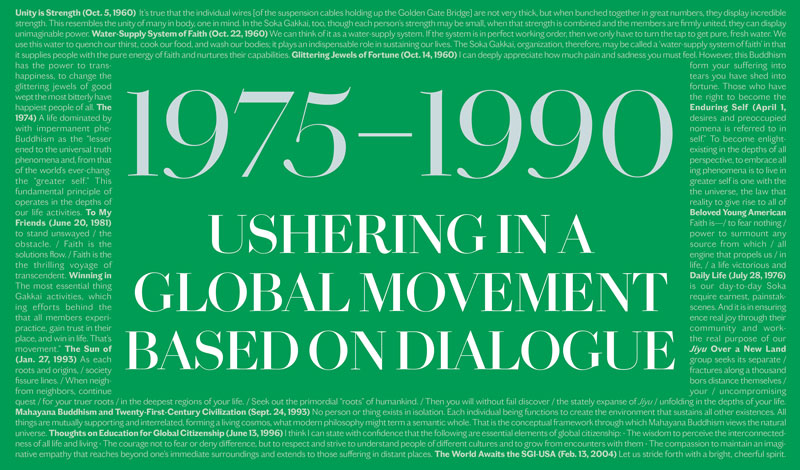To see the actual timeline please click here.
In January 1975, Ikeda Sensei joined 158 delegates from 51 countries and territories for the First World Peace Conference at the International Trade Center in Tamuning, Guam. There, the Soka Gakkai International was established, and Sensei selected as its president.
It was not happenstance that the SGI was founded in Guam. The island, which saw countless civilian deaths in the fierce fighting between American and Japanese military forces during World War II, would serve as the symbolic starting point for the Soka Gakkai’s international movement for peace and cultural understanding.
To that end, Sensei urged those gathered: “Rather than seeking after your own praise or glory, I hope that you will dedicate your noble lives to sowing the seeds of peace of the Mystic Law throughout the entire world. I shall do the same.”[1]
This vow resonated with thousands of his disciples in the United States. But there were those who did not grasp his message—who, in fact, could not fathom its spirit.
Four years later, in April 1979, Sensei stepped down from his post as Soka Gakkai president to shield the members from the perverse machinations of the Nichiren Shoshu priesthood, which sought to wrest control of the lay organization.
Stripped of position and title, Sensei was undaunted. Out of the limelight, he met and spoke with one person after another, be they politicians or housewives.
Yet he endured strict censorship imposed by the priesthood; overnight, the Soka Gakkai’s organ paper, the Seikyo Shimbun, was barred from publishing Sensei’s words or image.
Through his role as the president of the Soka Gakkai International, however, he was able to continue encouraging the members. In 1980, responding to requests from SGI-USA members, he traveled to Honolulu, San Francisco, Washington, D.C., and Chicago. In June 1981, he arrived in New York and presented to the SGI-USA youth his seminal poem “To My Beloved Young American Friends—Youthful Bodhisattvas of the Earth.”
In January 1983, Sensei submitted the first of 40 annual peace proposals to the United Nations, exploring the interrelation between Buddhism and the diverse challenges confronting global society.
Speaking with one person after another, Sensei initiated a groundswell of dialogue, building a network of peace and understanding. In 1987, he spoke at length with the American journalist Norman Cousins, going on to hold dialogues with prominent American figures including scientist and two-time Nobel Prize laureate Linus Pauling, mother of the U.S. Civil Rights Movement Rosa Parks and economist John Kenneth Galbraith.
In 1990, sensing the SGI-USA was entering a new, critical phase in its development, Sensei postponed his visit to South America, extending his U.S. trip to 17 days, during which he focused on raising youthful successors. Of that time, he later wrote: “Those impassioned, consuming days of unceasing toil and action are the collaborative golden poems of shared struggle.”[2]
Based on his lionhearted example, the disciples of Soka rose up to protect and expand the kosen-rufu movement, clarifying the essence of Nichiren Buddhism and sowing seeds of peace with the spirit, “We shall do the same.”
Jan. 26, 1975
Soka Gakkai International Established
During his 22-day visit to America, Ikeda Sensei traveled to Los Angeles, New York, Washington, D.C., Chicago and Hawaii. The visit culminated in the First World Peace Conference at the International Trade Center in Tamuning, Guam, where Sensei joined 158 delegates from 51 countries and territories.
At the event, the International Buddhist League (IBL), a global peace organization focused on the operational aspects of expansion, was established. Likewise, the Soka Gakkai International (SGI), focused on spreading the faith-based ideals of the Soka Gakkai throughout the world, was founded and Sensei elected its president.
In his address, he said: “The sun of Nichiren Buddhism has begun to rise above the distant horizon. Rather than seeking after your own praise or glory, I hope that you will dedicate your noble lives to sowing the seeds of peace of the Mystic Law throughout the entire world. I shall do the same” (The New Human Revolution, vol. 21, p. 33).
April 30, 1975
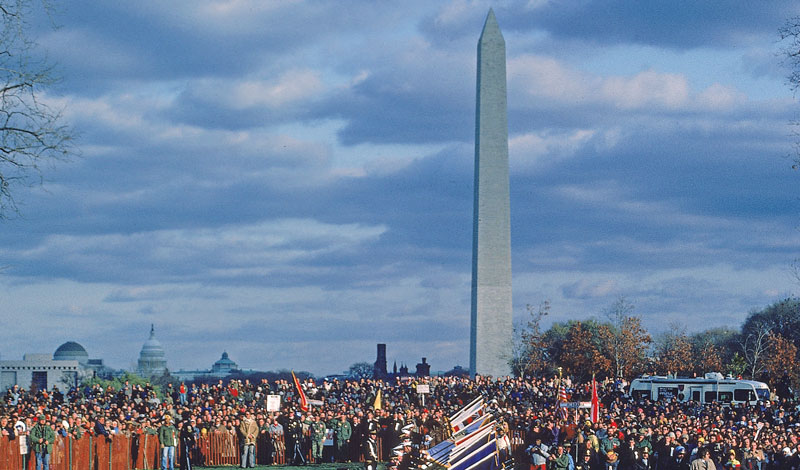
After two decades, the Vietnam War comes to an end as the South Vietnamese capital of Saigon falls to Communist forces.
Sept–Oct 1980
Commemorating 20 Years Since Ikeda Sensei’s First Visit
Oct. 2, 1980, marked the 20th anniversary of Ikeda Sensei’s first visit to the United States. Commemorative meetings and festivals were held with Sensei in attendance at Honolulu, San Francisco, Washington, D.C. and Chicago—cities that he had visited then. In Los Angeles, he participated in the First SGI General Meeting.
Chicago’s culture festival on Oct. 12, was themed “Capture the Spirit,” where some 500 members took to the stage, singing, dancing and sharing powerful faith experiences before an audience of 5,000. Moved by the performances, Sensei composed poems for the participants.
Dec. 12, 1980

Apple goes public, making it the largest tech public offering of its day.
June 1981
‘To My Beloved Young American Friends’
In June 1981, Ikeda Sensei returned to New York for the first time in six years. There, the priest of a local Nichiren Shoshu temple had been making suggestive statements to malign the Soka Gakkai, and individuals swayed by his rhetoric were sowing discord among the organization. Understanding this, Sensei was determined to meet with as many members as possible to communicate thoroughly the conviction and pride of the Soka Gakkai (see NHR-30, 411).
It was there that he crystallized his hopes for the SGI-USA youth in the poem “To My Beloved Young American Friends—Youthful Bodhisattvas of the Earth.” In it, he encourages the youth to become the very essence of conviction as they work for the happiness of the people, and he describes the power source for accomplishing that mission with the single word faith.
Daimoku Is the Strategy
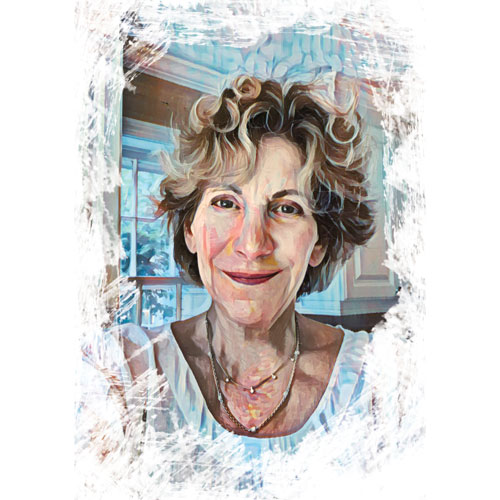
by Liza Schaeffer
Boston
I was sort of a hippy during college, seeking and experimenting with all kinds of things for “enlightenment.”
I was at this big party when this guy—who I thought was flirting with me—shared about Nam-myoho-renge-kyo. There was something about it that made me want to learn more, so I called him the next morning. I tried chanting right away, saw benefits and mystically ran into other SGI members in the neighborhood.
When I joined in 1976, I was quickly given responsibility to support three young women. I didn’t know what I was doing, but I tried to support them in the same way I was supported. I brought the World Tribune with me, chanted and read it together with each of them every week.
I remember there was this guidance from Sensei in the World Tribune where he explained the worlds of bodhisattva and Buddhahood within the Ten Worlds. When we encourage others, he said, our own lives change. This made sense to me. It’s why I’ve always challenged myself with sharing Buddhism and supporting others in faith.
I also chanted a lot, specifically because I was incredibly anxious. There were aspects of my life that I was afraid to look at, like my relationship with my mom. But as I chanted sincerely every day, these deeper aspects started to change. And in turn, I started relating with others from a more authentic place.
When I look back, there were many challenges with leadership and life. But the basics of chanting, seeking Sensei, sharing Buddhism and supporting the members always protected me.
My life has completely transformed. While I still have challenges, I just know daimoku is always the strategy—it’s the source of conviction. I just have to keep my challenging spirit alive, honestly conversing with the Gohonzon every day.
Jan. 1, 1983
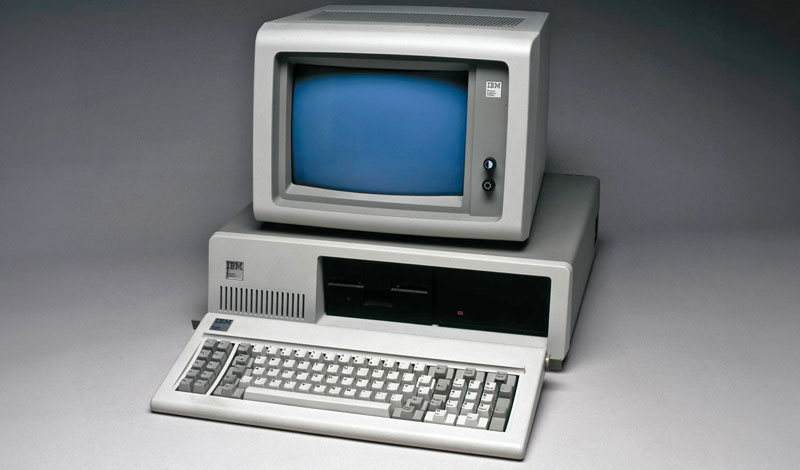
Considered the official birthday of the Internet, it marked the day when ARPANET and the Defense Data Network officially changed to the TCP/IP standard, connecting the various computer networks by a universal language.
Jan. 26, 1983
Ikeda Sensei Submits First Peace Proposal
Marking the 8th anniversary of the Soka Gakkai International’s founding on Jan. 26, Ikeda Sensei published his first peace proposal to the international community.
In it, he called for the early realization of a summit between the United States and the Soviet Union and an agreement to freeze further production of nuclear arms. He also suggested a Nuclear War Prevention Center and an international conference chaired by the U.S. and Soviet Union to deliberate freezes on military spending.
From 1983 on, Sensei submitted peace proposals on SGI Day every year for 40 years, with the determination to set into motion a new current of peace (see The New Human Revolution, vol. 30, pp. 629–30).
1982
SGI Newsletter Established
On April 24, 1979, Ikeda Sensei stepped down as third Soka Gakkai president to shield the members from the Nichiren Shoshu priesthood and corrupt former Soka Gakkai leaders colluding to bring about his downfall. The priesthood forbade the Seikyo Shimbun from printing Sensei’s encouragement or photos, viewing his relationship with the members as a threat to their authority.
The SGI Newsletter, responsible for translating Sensei’s encouragement, was born in 1982 during this tumultuous period based on constant requests from members worldwide for Sensei’s encouragement. At first, the newsletter sent translations each month by mail. Over time, it began sending daily translations to keep up with requests. By 1991, the newsletter added daily Spanish and Chinese editions. It continues to provide material published in the World Tribune, Living Buddhism and other publications around the world.
February 1987
Dialogues for Peace
During Ikeda Sensei’s final visit to America in this decade, various SGI facilities opened, including the SGI-USA World Peace Ikeda Auditorium in Santa Monica, Calif., the former Soka University, Los Angeles, campus in Calabasas, Calif., and the Miami Training Center. Sensei was also recognized by Dade County and Miami. These achievements were a testament to the growing membership and the trust the SGI’s peace movement was gaining in society.
Most noteworthy were Sensei’s dialogues with journalist and humanist Norman Cousins, dubbed “the conscience of America” for his outspoken opposition to nuclear weapons, and the two-time Nobel Prize-winning chemist Linus Pauling. These dialogues
demonstrated Sensei’s ever-broadening vision for peace and the universality of Buddhist humanism.
An Ambassador of Sensei
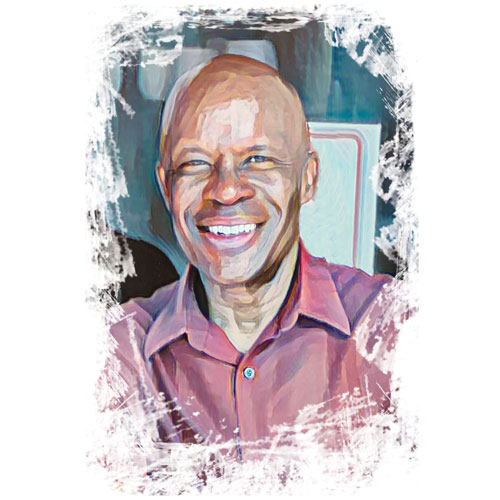
by Mark Horton
Los Angeles
For four years, my mom sent me issues of the World Tribune, but they’d end up in a drawer. When I called her with my struggles, she immediately flew to Chicago to encourage me to chant Nam-myoho-renge-kyo.
From the start, I chanted to have a strong, consistent practice for my entire life. And things changed fast—job, getting into school in Southern California and having a dream again.
In California, I came across my sister’s Seikyo Times, the precursor to the Living Buddhism, and saw photos of the many diverse SGI-USA members. As a new youth, I was inspired to see other young people practicing Buddhism, too.
I got involved in the SGI-USA Brass Band and the flurry of propagation activities occurring every day. I loved it. The camaraderie I developed with other young men’s division members, chanting and struggling together during those days, continues today.
When Ikeda Sensei visited Los Angeles in February 1990, I supported behind the scenes. Observing him from afar, I saw that his behavior exactly matched his word. This visit was life-changing. It’s what led me into law enforcement, to protect and serve my community through everything from the Rodney King trials to decades of unpredictable days. The foundation I developed in SGI activities prepared me, and I chanted every day like my life depended on it.
Through it all, I learned how to cultivate relationships based on Sensei’s example. It wasn’t always that way.
Today, I’m challenging myself in a graduate program on education through DePaul University. Again, this new goal began with an encounter with Sensei—this time through his books.
I wouldn’t have envisioned this type of life—having dreams and pursuing them without knowing the outcome. My prayer puts me in rhythm. I’m an ambassador of Sensei.
February 1990
17 Days—A Roadmap for Kosen-Rufu in America
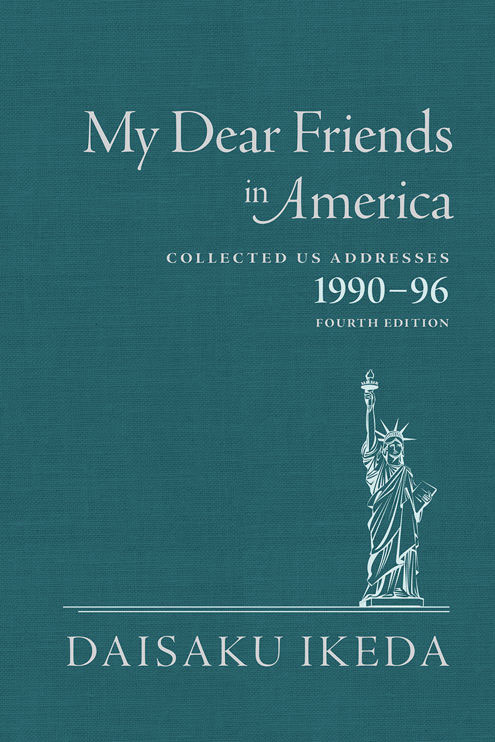
In February 1990, Ikeda Sensei canceled his trip to South America to extend his visit to the United States at a critical juncture for the SGI-USA. During his 17-day stay, he held numerous meetings with the American members, giving particular focus to the youth. At these sessions, he offered guidance to solidify the foundation of faith for the SGI-USA far into the future, leaving behind a textbook of faith that is included in My Dear Friends in America.
He also established and named various training groups including the America New Century Group, America Soaring Group, Eureka Group, Clear Mirror Group and others, gifting each of them handwritten cards.
August 15, 2024, World Tribune, pp. 12–17
You are reading {{ meterCount }} of {{ meterMax }} free premium articles

